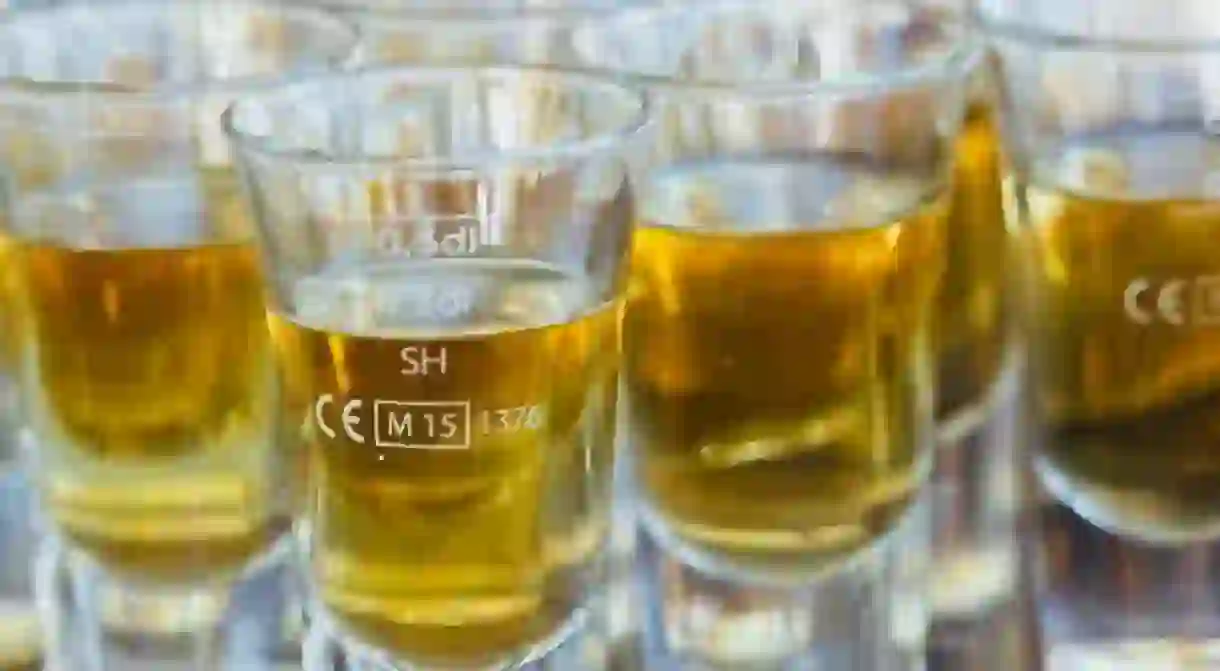7 Wonderful Souvenirs You Can Only Buy in Montenegro

Montenegro packs quite the punch for a country that covers such a small amount of territory, and visitors can be forgiven for wanting to pack up the entire country in order to take it home as the ultimate souvenir. We advise one of these gifts instead, unless country-kidnapping is your thing…
So what souvenirs will you be bringing home from Montenegro? The tourism-mad country has plenty available, but what should you be looking out for on the streets of Kotor, Perast, Budva and the rest? There is more to this place than postcards and fridge magnets, of course.
Rakija
Montenegro might not be tied to Serbia anymore, but that doesn’t mean the country is any less rakija-mad than its brother to the north. Nothing says ‘I had a great time in the Balkans’more than bringing the fruit-fermented brandy home for your friends to enjoy – just be sure to warn them of the perils of over-indulgence. Rakija is available from supermarkets, souvenir shops and markets, although we recommend trying to get your hands on some true homemade stuff.

Njeguški pršut
Food in Montenegro is a magical thing, but few things are more traditional than the delicious Njeguški pršut. Not a million miles away from Italian prosciutto but with an added Montenegrin twist, the ham is the speciality of the tiny village of Njeguši, located in the south of the country. A dry-cured ham, its special flavour is the result of expertly applied sea salt and that marvellous Montenegrin air.

Kapa
Souvenirs from Montenegro don’t come more traditional than an authentic Montenegrin cap. Known as a ‘kapa’ in the local vernacular, A black and red hat filled with history and story, the black hints at a beautiful past while the red nods towards the blood shed in removing the Ottoman yoke. You might not find yourself wearing the cap at home, but this is as genuine as souvenirs from here come.
Brojanica
Those looking for a more spiritual souvenir can do worse than seeking out a brojanica. The Serbian Orthodox Church reigns supreme here despite the rumblings of an independent Montenegrin equivalent forming, and a brojanica is a bracelet that doubles up as a prayer rope. They are best picked up from major pilgrimage sites, although you should have no trouble finding them at more popular spots.

Yugo-nostalgia
Serbia and Montenegro were the final republics to let go of the Yugoslav dream, so it is no surprise to find plenty of Yugo-nostalgia on offer in the latter. Yugoslav flags and all sorts of tat with Tito’s face plastered appear to be the most popular, and it’s easy to see why. Yugoslavia died long before Serbia and Montenegro let go of the moniker, but the dream is alive and well in the shops and stores of the Balkans.
Vranac wine
There is more to alcohol in Montenegro than rakija, and this Mediterranean marvel has plenty of wine waiting to be enjoyed along the shores. Vranac is the most famous, a native red wine that has been a protected national institution since 1977. This is seriously dark and rich wine, and oenophiles will be queueing up to take some home to impress their peers.

Cats of Kotor
No, don’t think about purchasing an actual cat and taking it home as a reminder of wonderful visit to Montenegro. Kotor and cats go way back, and the famous city seems to pride itself on taking good care of those homeless felines that wander the streets. This is the perfect place for lovers of all things moggie, and the Cats of Kotor shop is full of tabby-centric souvenirs of all shapes and sizes (and breeds).














